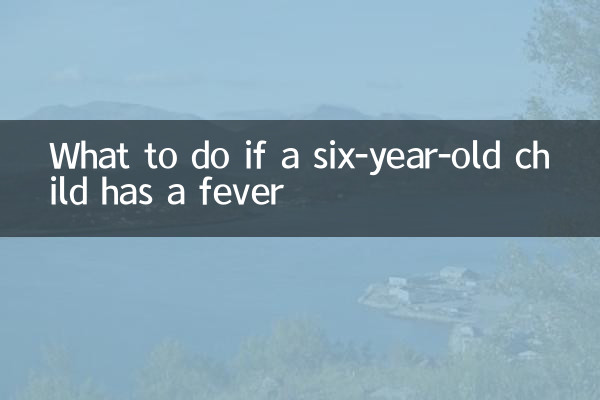What should I do if my six-year-old child has a fever? Hot topics and scientific response guides on the Internet in the past 10 days
Recently, children's health issues have once again become the focus of heated discussions on social platforms, especially topics such as "children with high fevers that persist" and "how to care for the flu season" have triggered widespread discussions. The following is compiled based on the hot content of the entire network in the past 10 days.<六岁孩子发烧科学应对指南>, including structured data such as symptom diagnosis, home care, and timing of medical treatment, to help parents quickly grasp key information.
| Ranking | Topic keywords | Discuss the popularity index | associated symptoms |
|---|---|---|---|
| 1 | High incidence of influenza among children | 985,000 | Recurrent high fever and cough |
| 2 | Alternate use of antipyretics | 672,000 | Body temperature repeatedly >39℃ |
| 3 | febrile seizure emergency | 536,000 | Convulsions, confusion |
| 4 | viral gastroenteritis | 418,000 | Vomiting + low fever |
| 5 | Mycoplasma pneumonia | 384,000 | Persistent dry cough + low-grade fever |
Analysis of common causes of fever in children aged two and six

According to interviews with pediatricians and data from authoritative institutions, fever in 6-year-old children is mainly attributed to the following conditions:
| Cause | Proportion | Typical symptoms | Course of disease |
|---|---|---|---|
| Viral infection (flu/cold) | 65% | Sudden high fever and muscle aches | 3-5 days |
| Bacterial infection (otitis media/pneumonia) | twenty two% | local pain, purulent discharge | Need antibiotic treatment |
| Mycoplasma infection | 8% | Irritating dry cough, low fever | more than 2 weeks |
| Others (vaccine reaction/heat syndrome) | 5% | Brief fever, no other symptoms | 1-2 days |
3. Four-step home care (recommended by WHO)
1.Body temperature monitoring:Measure every 4 hours and record the change trend. Axillary temperature ≥38°C is defined as fever.
2.Medication use:Acetaminophen (10-15mg/kg) or ibuprofen (5-10mg/kg), 6-8 hours apart,Avoid using interchangeable.
3.Physical cooling:Wipe with warm water (neck, armpits, groin), alcohol wipes are prohibited.
4.Principles of rehydration:Add 50-100ml oral rehydration salt every hour to avoid dehydration.
4. Five danger signs that require immediate medical attention
| symptom | Possible risks | Urgency |
|---|---|---|
| Sustained high fever >40℃ for more than 24 hours | sepsis risk | ★★★★★ |
| Seizures or disturbance of consciousness | Febrile seizure/encephalitis | ★★★★★ |
| Shortness of breath (>40 times/min) | pneumonia/asthma | ★★★★ |
| Skin bruising or rash | Kawasaki disease/meningitis | ★★★★ |
| Refusal to drink water + decreased urine output | severe dehydration | ★★★ |
5. Answers to recent frequently asked questions from parents
Q1: What should I do if my fever reaches 39°C an hour after taking antipyretic medicine?
A: It takes 30-60 minutes for the drug to take effect. The drop in body temperature ≠ the elimination of pathogens. If the mental state is acceptable, it is recommended to observe the patient for 4 hours before considering a second dose.
Q2: Should I be alert when my child says his legs hurt?
A: During the flu season, you need to pay special attention to the possibility of myositis. If it is combined with difficulty walking and discolored urine (cola color), seek emergency treatment immediately to check for rhabdomyolysis.
Q3: When is the most accurate time to do blood routine?
A: Testing 24 hours after fever has more reference value. Premature testing may not be able to distinguish viral/bacterial infections.
Note: The above content is compiled from the National Health Commission's "Guidelines for Fever in Children", the latest recommendations from the American Academy of Pediatrics (AAP), and hot discussions on Weibo/Douyin and other platforms. During special periods, it is recommended to keep electronic thermometers, antipyretic patches and oral rehydration salts III at home to avoid blind use of antibiotics.

check the details

check the details